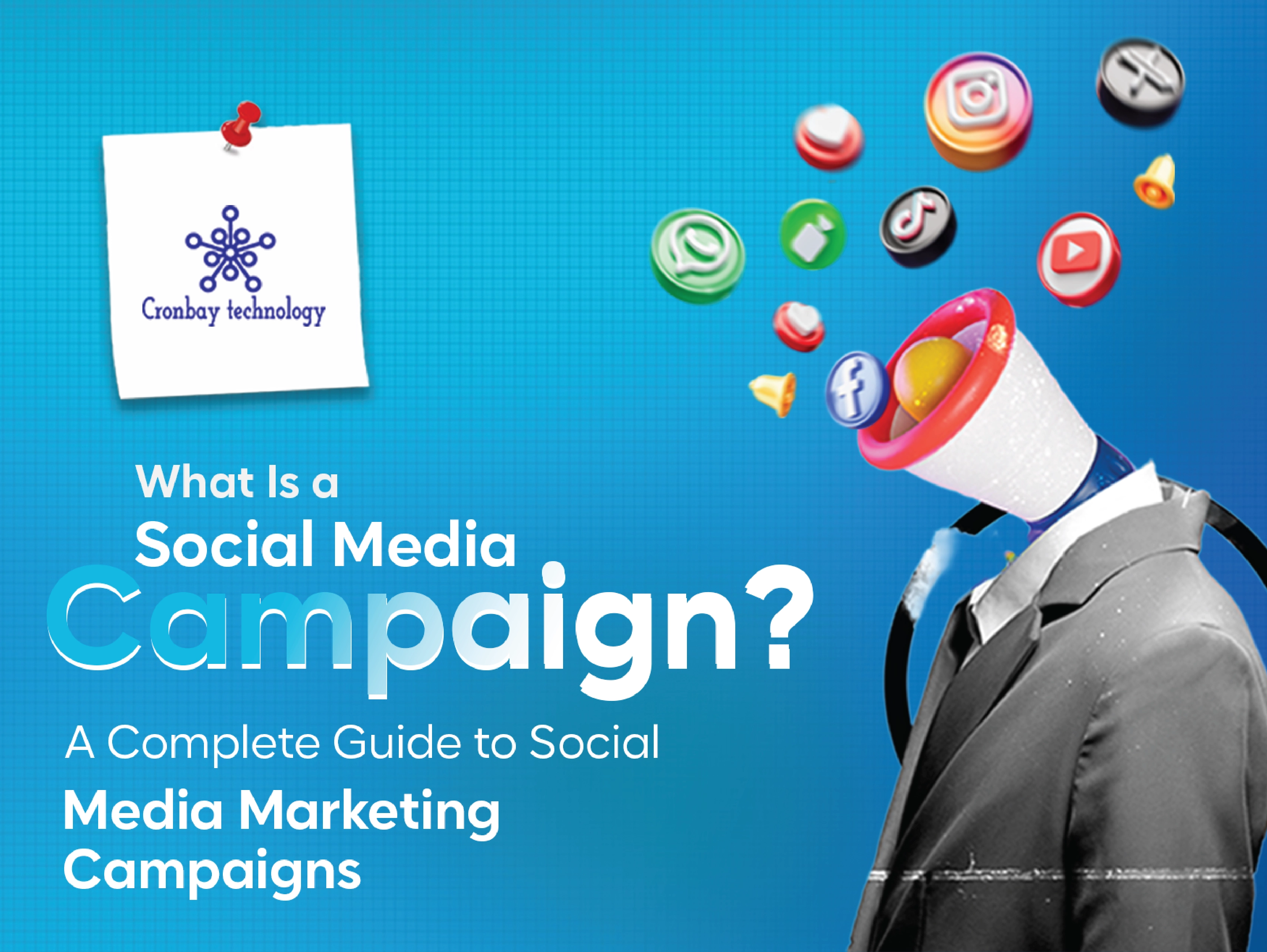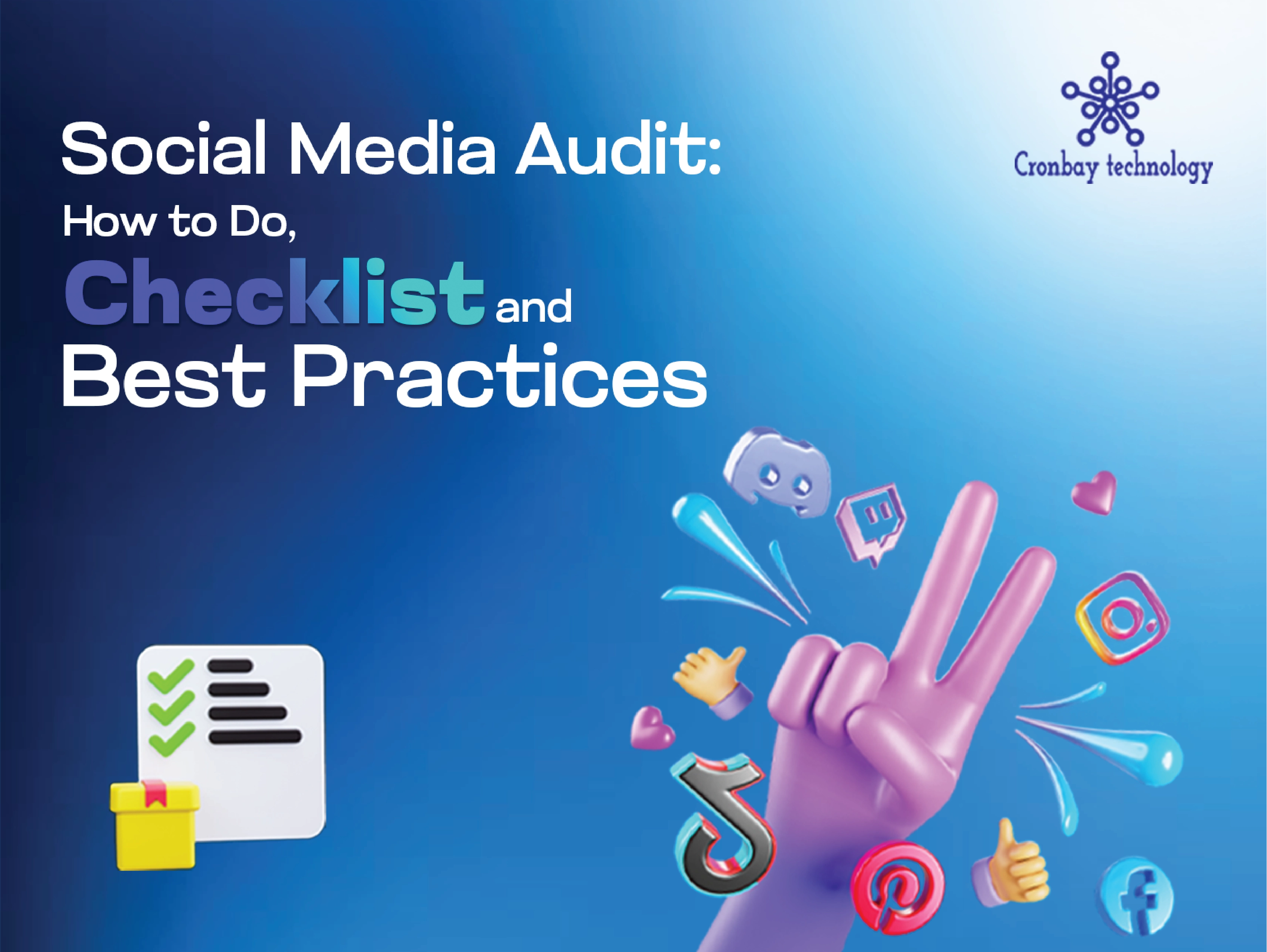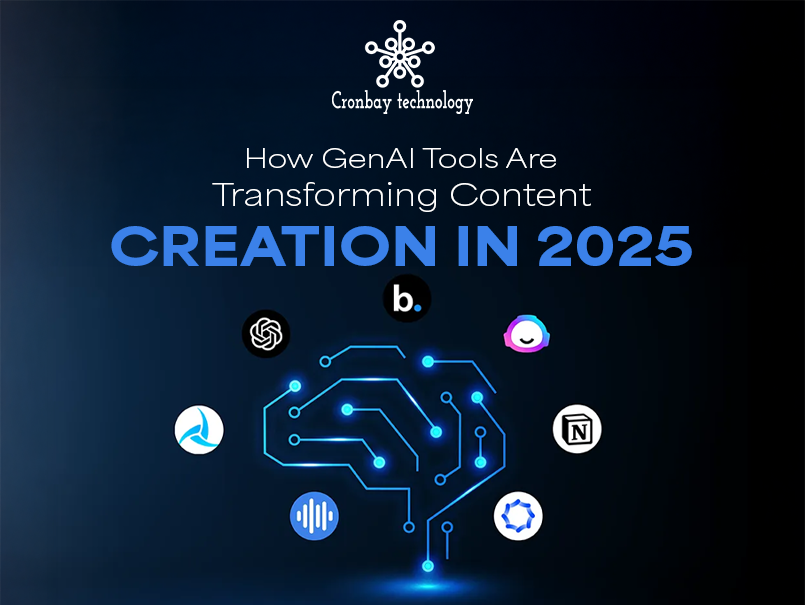Imagine this: you're finally ranking high on Google after months of hard work. Then out of nowhere, your organic traffic dips. The culprit? Not your content, not your strategy, but a single bad backlink.
In SEO and digital marketing, link quality is everything. One toxic link can pull you down, while the right backlink profile can push you to the top of search engine rankings.
That's where two key metrics step in: Spam Score and Toxic Score.
They sound similar, both flagging harmful links, but they're not the same. And in today's digital era, knowing the difference is critical for SEO professionals and digital marketers alike.At Cronbay Technologies your trusted online marketing partner we're here to break down what makes spam scores and toxic scores different,
why they matter, and how you can turn these insights into SEO growth while avoiding toxic backlinks and spam sites.
Did You Know?
Moz’s Spam Score is based on 27 common spam signals, while SEMrush’s Toxic Score relies on 50+ advanced markers—that’s almost double the precision!What Is Spam Score in SEO?

Spam Score is a metric evolved via Moz, one of the leading SEO and link building tools, to help site owners identify domain names that showcase spammy behavior. This rating is expressed as a percentage from 0% to 100%, wherein a higher spam-score means a better chance of being flagged as a spam site. Want to dive deeper into Spam Score? Check out our detailed guide on Spam Score here
Key Factors That Influence Spam Score
- Low domain authority: Domains with little to no website authority are much more likely to be viewed as spammy. You can find DA using various tools to assess a site's authority.
- Thin or duplicate content material: Websites with shallow or copied content often cause spam flags.
- Over-optimized anchor text: Keyword-filled or unnatural anchor text can raise red flags.
- High number of outbound links: Excessive linking out, specifically to inappropriate or shady sites, including link farms.
- Hidden factors: Cloaked URLs, hidden text, or sneaky redirects can all contribute to higher spam scores.
Did You Know?
Over 18% of domains with a Spam Score above 60% are at risk of being de-indexed by Google. Regular checks can save you from sudden ranking drops.
What Is a Toxic Score in SEO?
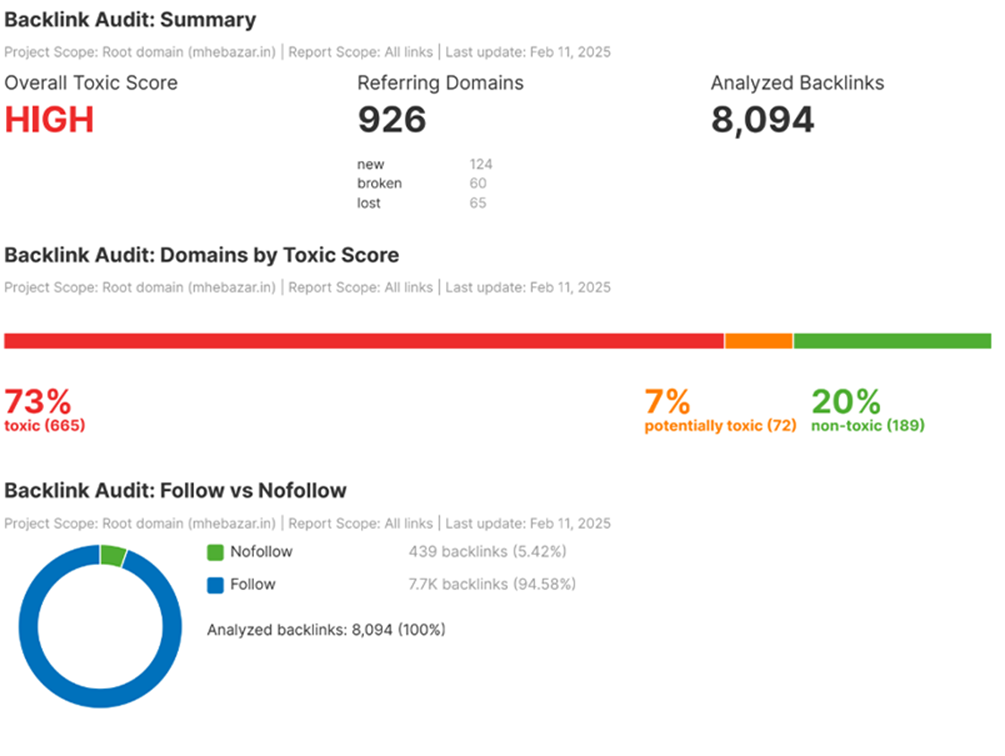
Toxic Score is a metric popularized by SEMrush, designed to assess the toxicity of individual inbound links rather than the entire domain.
It's a quintessential part of modern SEO, as it identifies toxic backlinks that could be hurting your rankings or subjecting you to manual actions by Google.
Key Toxic Signals:
- Links from penalized or de-indexed domains
- Inbound links from Private Blog Networks (PBNs)
- Foreign-language links without contextual relevance
- Exact-match anchor text from spammy websites
- Links from domains with zero organic traffic or SEO authority
SEMrush uses 50+ quality markers to determine a link's risk level. Backlinks are classified as:
- Non-Toxic
- Potentially Toxic
- Toxic
This granular view makes it easier for SEO specialists to surgically remove harmful links without affecting valuable ones, maintaining a healthy backlink profile and reducing the overall toxicity score
Hack Insight:
Always cross-check toxic backlinks with Google Search Console before disavowing. Sometimes, SEMrush flags links as “toxic,” but if Google sees them as natural, removing them could hurt your link equity.
Spam Score vs. Toxic Score: The Key Differences
Here's the difference between spam score and toxic score:
| Feature | Spam Score (Moz) | Toxic Score (SEMrush) |
|---|---|---|
| Focus | Focus Domain-level spam signals Individual backlink toxicity | Individual back link toxicity |
| Unit of Analysis | Entire website or domain | Specific inbound links |
| Scale | 0-100% | Non-Toxic / Potentially Toxic / Toxic |
| Basis | 27 spam flags | 50+ toxicity markers |
| Common Use | Overall domain health | Link audit and pruning |
Understanding the Spam Score vs Toxic Score comparison ensures that you're using the right tool for the right job.
While Spam Score gives a bird's-eye view of a domain's trustworthiness, Toxic Score provides a microscope to examine individual backlink issues and detect toxic links.
Why These Scores Matter in Current Algorithm
Google's ranking algorithms are increasingly driven by AI and machine learning, meaning they are now smarter at detecting manipulative link-building practices and spam sites.
To know more about backlink building strategies, explore our detailed blog on Backlink Building
Here's why ignoring spammy or toxic backlinks is risky:
- Decreased search visibility: Harmful links decrease your ability to rank for target keywords.
- Penalty risks: Toxic backlinks can lead to manual or algorithmic penalties.
- Wasted crawl budget: Spammy backlinks dilute your domain's authority and waste Googlebot's time.
- Brand reputation harm: Unnatural links can erode trust among search engines and users alike.
At Cronbay Technologies, we implement robust data-driven SEO strategies that proactively monitor and improve your link health, helping your long-term digital success and organic traffic growth while avoiding toxic links and manipulative backlinks.
Toxic Backlinks vs. Spammy Backlinks: Are They the Same?

The terms "toxic" and "spammy" are often used interchangeably, but they serve slightly different functions:
- Spammy backlinks refer to links from domains that appear untrustworthy based on Moz's spam indicators.
- Toxic backlinks, on the other hand, are flagged as actively harmful and often associated with Google penalties.
Tip: All toxic backlinks are spammy, but not all spammy backlinks are necessarily toxic. Understanding this nuance can help SEO professionals decide whether to simply monitor a link or disavow it entirely.
How to Reduce Spam Score in SEO
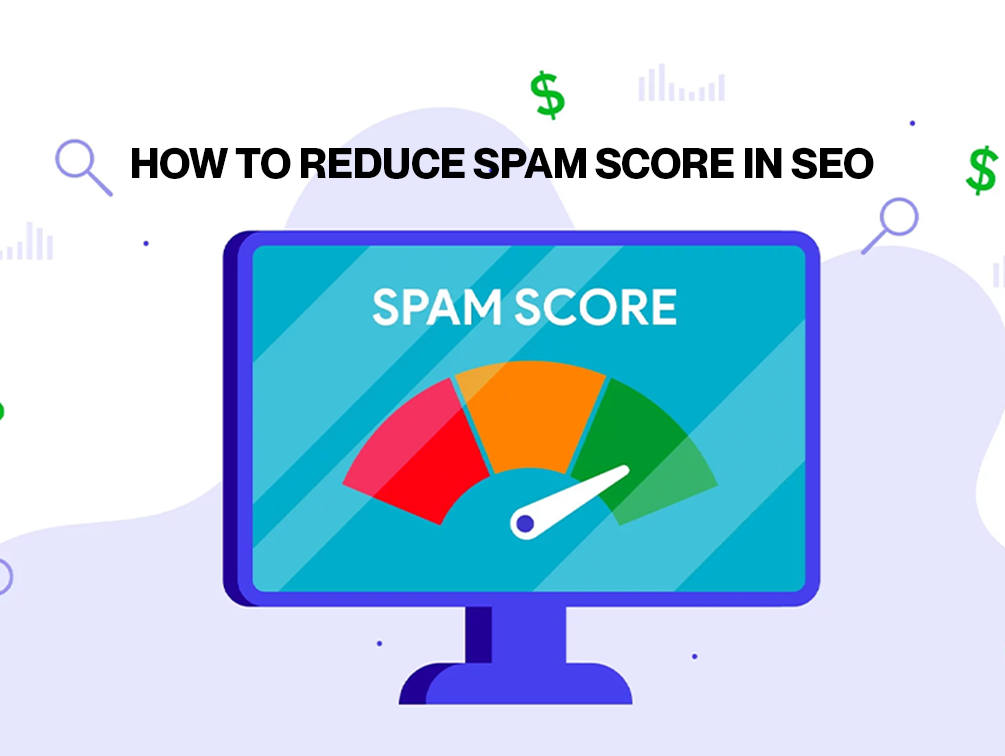
Lowering your spam score isn't about tricking the system—it's about improving your website's domain integrity and trust flow.
Practical Steps:
- Audit Outbound Links: Remove or add rel="nofollow" links to inappropriate external links.
- Enhance Content Quality: Improve thin content by adding depth, visuals, and updated information.
- Avoid Cloaking and Redirect Loops: Keep redirects simple and transparent.
- Anchor Text Optimization: Use branded or natural language anchors rather than exact-match keywords.
- Disavow Suspicious Backlinks: If you're getting links from high-spam domains, consider using the disavow links tool through Google Search Console.
Also Read: SEO vs. Content Marketing: Which One Drives More Blog Traffic?
How to Reduce Toxic Score in SEO
Toxic backlinks can directly jeopardize your website's reputation with Google, and should be dealt with care.
Actionable Tips:
- SEMrush Backlink Audit Tool: Use it to categorize inbound links by toxicity levels.
- Request Removal: Reach out to site owners to remove links manually.
- Disavow Toxic Links: Upload a disavow file through Google Search Console.
- Avoid Link Schemes: Never buy inbound links or participate in reciprocal links exchanges.
- Focus on Relevance: Build backlinks only from contextually relevant, high-authority websites.
Also Read: Google's Link Schemes Guidelines
Does Spam Score Affect SEO?
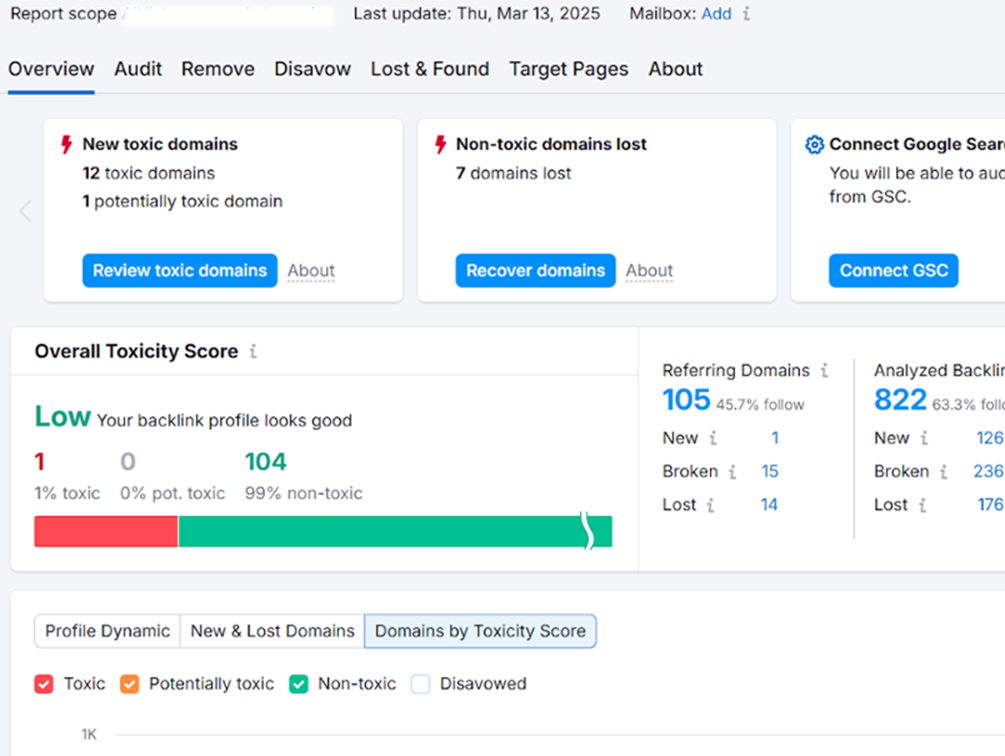
Technically, Spam Score isn't a direct ranking factor. Google doesn't use Moz's metric to determine your rank. However, a high spam score may:
- Correlate with untrustworthy practices
- Make your domain more likely to be flagged
- Impact your organic visibility indirectly
Hence, it's wise to maintain a clean spam profile and focus on building natural backlinks and organic backlinks, avoiding toxic links and paid links that could harm your SEO efforts.
Monitoring & Prevention: Best Practices for Better SEO Ranking and Visibility

1. Regular Backlink Audits
Schedule monthly or quarterly audits using tools like Moz, Ahrefs, or SEMrush to stay on top of new and existing backlinks. This consistent backlink analysis is crucial for maintaining a healthy backlink profile and detecting toxic backlinks early.
2. Use Spam Score and Toxic Score Checkers
Don't rely on guesswork—run your domain through reliable tools like the Moz Spam Score Checker and SEMrush's Toxic Score Tool. These backlink checkers provide valuable insights into your link building efforts and help identify potential toxic links.
3. Focus on Link Quality
Google's preference is clear: one authoritative, relevant backlink beats dozens of low-quality ones. Prioritize natural backlinks and organic backlinks over manipulative link building tactics like link farms or comment spam.
4. Set Up Alerts
Google Alerts and backlink monitoring tools can notify you of new, potentially harmful links pointing to your site. This proactive approach can help you address bad backlinks quickly and maintain a healthy authority score.
5. Work With SEO Experts
At Cronbay Technologies, our tailored SEO solutions deliver up to 30% better conversion rates than the industry average. We ensure your link-building efforts are both safe and successful, avoiding link spam and focusing on quality backlinks while monitoring your overall toxicity score.
Did You Know?
A single high-authority backlink (DA 70+) can offset the negative impact of dozens of low-quality links. Quality always beats quantity in link building.
Final Thoughts: Navigating Link Health to boost your website Authority
As the SEO landscape continues to evolve, digital marketers need to deepen their understanding of link health.
Knowing the difference between Spam Score and Toxic Score allows you to protect and strengthen your website's SEO performance proactively.
At Cronbay Technologies, we don't just analyze links—we optimize them. Whether you're managing mobile app SEO or a full-scale eCommerce website, our end-to-end solutions ensure your digital foundation is strong, clean, and built for growth.
At Cronbay Technologies, we don't simply analyze hyperlinks—we optimize them. Whether you're handling mobile app SEO or a complete-scale eCommerce website, our end-to-end solutions make certain your digital foundation is powerful, smooth, and built for increase.
Explore More from Cronbay
FAQs:
1. How to check Spam Score and Toxic Score for backlinks?
To check Spam Score, use the Moz Link Explorer or MozBar Chrome extension. Enter your domain or a competitor's, and Moz will generate a Spam Score (0-100%) based on 27 recognized spam indicators.
To check Toxic Score, use the SEMrush Backlink Audit Tool. It analyzes your backlink profile and categorizes each link as Non-Toxic, Potentially Toxic, or Toxic, using over 50 quality markers.
To take a look at Toxic Score, use the SEMrush Backlink Audit Tool. It analyzes your oneway link profile and categorizes every hyperlink as Non-Toxic, Potentially Toxic, or Toxic, using over 50 quality markers.
Tip: Regular backlink audits using both tools provide a comprehensive view of your domain's link health and help in effective backlink monitoring and toxic link detection.
2. Is Toxic Score more essential than Spam Score?
Toxic Score is often more important, especially when assessing backlink quality. It evaluates backlinks and can identify links which may result in Google penalties, making it crucial for link pruning and cleanup.
Spam Score, on the other hand, reflects the overall trustworthiness of a website. While both matter, Toxic Score tends to have a more direct impact on SEO performance and penalty risks, including manual actions and algorithmic penalties.
3. Spam Score vs. Domain Authority: What's the distinction?
- Spam Score (Moz) assesses the risk level of a domain based on spam-like characteristics.
- Domain Authority (DA) (Moz) predicts how well a site will rank in search engines, based on link quantity and quality.
While Spam Score warns you of potential SEO risks, Domain Authority helps you gauge ranking potential. A high DA with a low Spam Score is ideal for SEO performance and indicates good website authority. You can find DA using various backlink checker tools.
4. How to perceive toxic back-links?
Identifying toxic backlinks requires advanced tools and a strategic approach:
- Use SEMrush's Backlink Audit Tool to automatically flag suspicious links.
- Look for backlinks from:
- Penalized or de-listed domains
- Private Blog Networks (PBNs)
- Sites with exact-match anchors or zero organic traffic
- Analyze links for contextual irrelevance or foreign-language content unrelated to your niche.
Be wary of links from sites engaged in excessive guest posting or reciprocal links schemes.
Manual evaluation plus automated auditing gives you the most accurate picture of link toxicity. This process helps in identifying potentially harmful links that could lead to negative SEO impacts or even an SEO attack.
5. What is a high Spam Score in SEO?
A good Spam Score is typically between 0% and 30%. Here's a quick breakdown:
- 0-30% (Low Risk): Generally safe
- 31-60% (Moderate Risk): Monitor cautiously
- 61-100% (High Risk): Likely spammy, may also harm your SEO
Aim to keep your domain's Spam Score below 30% to minimize the risk of being flagged by search engines. Regular monitoring and addressing of spam indicators can help maintain a healthy spam score and improve overall domain trust. If you find your score increasing, consider a link removal strategy or submitting a reconsideration request if you've been hit with a manual action.
See What's Trending in Digital Marketing World
Do you want to know what are the latest developments in the digital world? Catch the detailed insights with our latest blogs.


